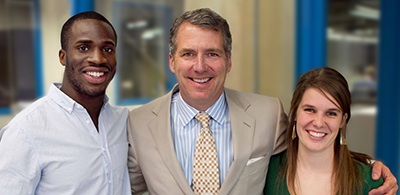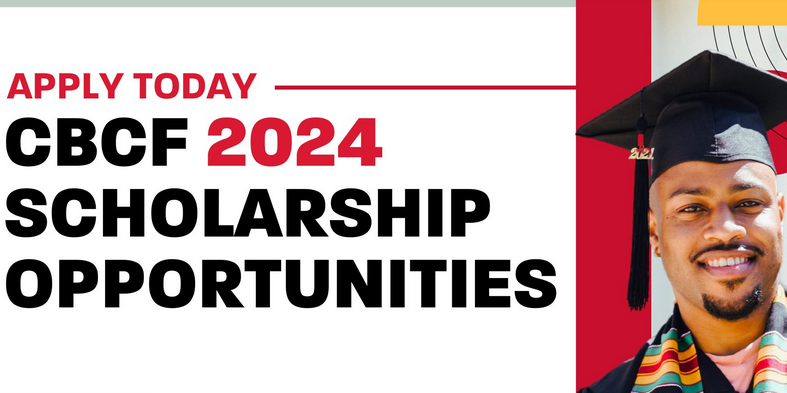Chancellor Milliken
[Education]
Increasing emphasis on STEM education
Remarks by Chancellor James B. Milliken
Speaking at a meeting of the Association for a Better New York, Chancellor James B. Milliken outlined an ambitious agenda for CUNY in the next decade that includes building research and technology development, expanding global opportunities and increasing digital education.
The Chancellor said, “The most important city in the world should have the best public university in the world.”
One hundred sixty seven years ago, CUNY opened its doors as the Free Academy on the site of the current Baruch College. Founder Townsend Harris said at the opening of the Free Academy in 1847: “let the children of the rich and poor take their seats together and know of no distinction save that of industry, good conduct, and intellect.”
That vision remains vital today.
Over the first 100-plus years since CUNY’s founding, the Free Academy evolved into City College, other colleges were added throughout the five boroughs and then in 1961, the public higher education campuses in New York City—graduate, senior and community colleges—were organized into The City University of New York.
The list of notable CUNY alumni, including 13 Nobel Prize winners, is far too long to review, but suffice it to say that many, many talented, immigrant, first- generation and low-income New Yorkers got their start at CUNY, giving testament to its role, according to City College alumnus and Intel co-founder Andy Grove, as “the Great American Dream Machine.”
The record in the second half of the 20th century is more mixed, with very important, positive movement made in access and diversity, but the consequences of an undifferentiated system of colleges with remediation necessary at every campus took its toll on CUNY’s quality, reputation and value to its students, the City and the State.
The last 15 years was one of the great watershed periods in CUNY’s history. Former Yale President Benno Schmidt’s 1999 report prescribed a number of steps required for CUNY to rebuild quality and reclaim its former glory.
Then, as chair of the CUNY Board of Trustees, Chancellor Matthew Goldstein and an able group of Trustees, (including Vice Chair Philip Alfonso Berry, here with us today, along with Trustees Rita Di Martino, Frieda Foster, Joe Lhota, Charles Shorter, Barry Schwartz and Terrence Martell) together with senior university leadership and college presidents, led the difficult and sometimes controversial work of raising standards, increasing quality and at the same time developing successful strategies for student access, mobility and success.
We have seen a steady rise in CUNY’s value and reputation. The outstanding accomplishments of this modern era include the creation of a new model for a community college, graduate schools of journalism and public health, a highly selective Macaulay Honors College, which competes with top colleges in the nation for its students. Linda Macaulay, who with her husband Bill Macaulay endowed the school, is with us this morning with some very talented Macaulay students. These achievements and others put CUNY in the enviable position it’s in now.
But a new day brings new challenges and opportunities. The landscape of higher education is changing dramatically. At a time when educational attainment is universally recognized as a key to economic competitiveness, we have lost our lead. For most of our lifetimes, the United States ranked number one in educational attainment. Today we rank 14th.
At the same time, there is greater media scrutiny and public skepticism about higher education than ever before. High costs of tuition are roundly criticized, the amount of debt students incur is astounding, and the quality and relevance of higher education is being questioned.
CUNY, more than most, has a strong rejoinder to the criticism.
This year CUNY has 274,000 degree seeking students—a record—and 260,000 adult and continuing education students. Think of that impact; here is one university in one city with a student body larger than the population of, well, Omaha. Forty percent of those students were born outside the US mainland. Our students hail from 205 countries and speak over 190 languages.
And if there is any institution doing something about income inequality, it’s CUNY.
Three quarters of CUNY freshmen come from New York City high schools. And at a time when there is much attention to the value added of higher education, CUNY serves many students who otherwise would have little or no opportunity.
Forty percent of our students come from families with a household income of under $20,000. CUNY has some of the lowest tuition levels in the country, but even our rates would be way out of reach to many of our students, if not for federal, state and local financial aid programs. As it is, 65 percent of full-time CUNY undergraduates pay no tuition. And at a time when the nation’s student loan burden tops one trillion dollars, 80 percent of CUNY graduates leave with no debt from the federal student loan program.
CUNY should make no apologies for its pursuit of quality over the last 15 years. The fundamental mission of public higher education is to provide both access and excellence. One without the other serves our students and society poorly. Let me make this clear: on all counts CUNY is delivering on its promise far more than it did a generation ago.
Innovative new programs such as ASAP (Accelerated Study in Associate Programs), which has tripled community college graduation rates, and CUNY Start, which allows students with remediation needs to address them in a pre-matriculation “boot camp,” without paying tuition and without using up precious financial aid, are national models. Now over half of the undergraduates at our most selective colleges, such as Baruch, Hunter, Brooklyn, Queens and City, start as community college students, meet remediation requirements, and then transfer to a senior college. CUNY is providing a pathway that gives students a meaningful opportunity to succeed.
Take Layla Quinones, for example. She was a high school dropout who received her High School Equivalency and then Associates degree from LaGuardia Community College, went on to NYU on an academic scholarship and she is about to enroll in a PhD program in physics.
Or consider Catherine Mateo, who arrived in the US from the Dominican Republic speaking no English. She attended College Now, Lehman College and Macaulay Honors College. She graduated from Stanford Law in June. She is back at Lehman now, helping fellow students before beginning her career as a lawyer in January. I hear CUNY stories like this every day and in my visits to all 24 CUNY campuses this summer I met many people like Layla and Katherine.
It’s no surprise the value proposition at CUNY is receiving national attention. In its annual rating of best values this fall, Washington Monthly magazine named as the three best “bangs for the buck” in the country Brooklyn, Baruch and Queens Colleges.
Further evidence of what a gem New York has in CUNY.
Is CUNY where it needs to be today? Despite all the progress, the answer is we have lots to do.
Our goal should be for the university to achieve its full potential in serving the people of New York. So how do we build on a rich history, the successes of the last 15 years, and the rich assets of today so that CUNY is the world’s leading urban university serving the world’s leading city?
Broad Access and Quality
Our challenges are significant, but the payoff is enormous. Among the challenges: there are still too many students who arrive not ready for college. We need to deepen our partnership with the New York City schools, which provide three quarters of our new freshmen. Eighty percent of the students who enroll at our community colleges require remediation. We need to challenge our thinking about traditional remediation to most effectively serve students who arrive at our community colleges unprepared for college work.
Nationally there are far too many students who do not earn their degrees within a reasonable time, and CUNY is no exception. At the most basic level, such as addressing students’ remediation needs, or providing an Associate Degree in a reasonable time that leads to a job or a senior institution, or moving senior college students towards a degree, we still have much work to do. We have some great programs, but we must address the challenges of scaling them effectively. But even if we do a much better job of overcoming these basic challenges, what else is on CUNY’s agenda for the next 10 years?
Leadership in preparing the workforce for the 21st century.
To do this, we must, among other things, increase the emphasis on STEM education. Both the Governor with his scholarship program for STEM students and the Mayor with his historic new investment in STEM programs at our community colleges are strong supporters of this goal. CUNY has a key role to play here but real work needs to start in the public schools, where students’ decisions about pursuing science and math are most often made and essential preparation takes place. This calls for new levels of collaboration among the schools, CUNY, government, labor and the private sector. There has been some good news on this front in New York, such as P-Tech and other similar programs, and we must build on these.
CUNY has developed critical pathways from community colleges to senior colleges, giving tens of thousands of students a year a chance to continue their education, which is wonderful. But community colleges are more than an entry point for a four-year degree. Nationally, community colleges are considered the most nimble, responsive of our institutions, working closely with business and labor to develop courses, programs and certificates. Last month I met with leaders in the tech sector in New York, who are desperate for well-trained programmers, software developers and gamers—many of whom can come directly from our community colleges, with less time to degree, less cost and a quicker path to earning a very good living. ABNY’s own report on the New York City Tech Ecosystem makes it clear that there are growing numbers of good jobs that do not require a four-year degree. This is a very attractive path and one that may be perfect for many CUNY students.
Stronger public-private partnerships
CUNY has some exciting programs with private companies, but despite its location in an international hub of commerce with many of the leading businesses in the world, including a rapidly growing technology sector, the engagement of CUNY faculty and students with business falls far short of where it should be. We need more internship opportunities for students that can lead to full-time jobs, and more mentoring opportunities for students who are often the first in their family to attend college. We should provide interested faculty with more opportunities to work collaboratively with the private sector. We’re seeing much more of these kinds of public-private linkages across the country; New York is a rich commercial environment and has tools others don’t have—such as StartUp New York and CUNY 2020. We must take full advantage of these and other assets.
Building a Robust Research Enterprise
A related strategy involves our potential in research—particularly in the sciences and engineering—and in technology development. Opportunities in the 21st century include businesses that didn’t exist in the 20th, and our faculty and students can be an integral part of the development of new knowledge, technologies and processes. We’ve made some impressive investments in science facilities with more to come, but we must also double down on recruiting and retaining the best scientists and students to reap the full advantage of these investments. We’re in a global race for talent and we simply must be competitive. We also need an institutional culture that supports, rewards and nurtures faculty who are interested in commercially developing their intellectual property. And we need an administrative infrastructure that reduces, not increases, the friction involved in that development.
Addressing the Challenges Facing Cities
While much of this new spirit of engagement is about developing knowledge and a skilled workforce for the new economy, there are other benefits to the city. CUNY should be a leader in research, education and engagement that addresses grand challenges in a rapidly increasingly urbanized global population, attracting leading urban university partners around the world. Our STEM and other programs provide platforms for these key challenges, from the built environment and sustainable energy to public health and education. And our arts and humanities programs play a critical role in the culturally rich environment so important to New York’s position in the world.
Global CUNY
And speaking of the world in the 21st century, CUNY should become “Global CUNY.” Every major university must be global in outlook and scope, and few universities are better positioned than CUNY. We have an enormous advantage: a student body with 40 percent born outside this country and students who speak almost 200 languages. But that alone isn’t enough. Our recent success with the highly competitive Fulbright program clearly demonstrates that our faculty and students can compete on the highest level with their peers anywhere. Last year CUNY set a record with 22 student Fulbright winners and 11 faculty Fubright recipients, and several of our award-winning students are here this morning. I want our graduates to be competitive with graduates from the best universities anywhere, and without an understanding of the world that comes, in part, from a strong academic component, they will not be. The task for us is to take advantage of one of CUNY’s and New York’s most valuable assets—our great diversity—and do what’s always been in CUNY’s DNA—create the best value added for our students.
Digital CUNY
Similarly, CUNY should become Digital CUNY. In another of what I’m discovering are the paradoxes of CUNY, I am told that one reason we have not focused as much as some on the use of technology in education is because “who needs ‘distance education’ when we have a college a subway stop away?”
But technology is contributing to the transformation of higher education in ways that have little to do with geographical distance. We are developing new technological tools, new classroom platforms and blended learning opportunities that are transforming the way subjects are taught and learned. At Nebraska a few years ago, we learned that 70 percent of the many students enrolled in our online undergraduate classes were students matriculating—often living on—our campuses. Despite the fact that courses can be delivered to students thousands of miles away, they are often delivered around the corner.
And no matter how many locations we provide for our course offerings, it is hard to beat the 24 hour, asynchronous delivery that digital classes can offer. Many students simply enjoy and thrive learning online. And our faculty should have every opportunity to be active in the digital era that is changing the environment for teaching and learning. I want our students to leave CUNY very comfortable with online learning, so when they have to retool or decide to pursue another degree or certificate, which is becoming increasingly important, they will be able to do so. And all the better if they do it with CUNY.
The Case for Philanthropy
How do we do all we need to do when we know government—from federal research agencies to states across the country—is having difficulty maintaining, let alone increasing its investment in higher education? Despite the fact that New York has been more generous than many other states, CUNY cannot achieve its potential and adequately serve New York with only public funding and modest tuition. We are becoming much less competitive for faculty—and there is no such thing as a university better than its faculty.
Although I am convinced that a continued strong public investment is essential and that the case for it is compelling, there can be no doubt that the economics of public higher education are changing.
As recently as a generation or two ago, most public institutions were not aggressively—or successfully—raising large amounts of private support, and CUNY certainly was not. Potential donors viewed public institutions as obligations of the state or city. But public obligation or not, we know that is not enough. Private philanthropy has become an increasingly important part of funding public university needs, capital and programmatic, faculty support and student scholarships. And it is only going to become more important.
CUNY has seen impressive growth in private fundraising. In 15 years, CUNY’s university–wide annual fundraising has grown from $40 million per year to $240 million. That’s a very positive development, but I don’t believe there is an institution in New York that can make a more compelling case for private support. This Great American Dream Machine serves over 500,000 thousand students every year, the vast majority of whom will live, work, and contribute to the economy, tax base, and quality of life in New York. There is no greater way to leverage a gift than to invest in CUNY.
CUNY has a rich history, and in recent years we have become even better. The environment for public higher education is changing in ways that make CUNY more essential than ever. We have an ambitious agenda for CUNY which I hope you will support. If we are successful, the returns to students and to New York will be tremendous. The most important city in the world should have the best public university in the world—educating its young and old, addressing the challenges that it faces, partnering in its economic growth, contributing to the health of its people and enriching its cultural and civic life.
The best city deserves the best public university. That’s New York and that’s CUNY.
James B. Milliken, Chancellor
The City University of New York








